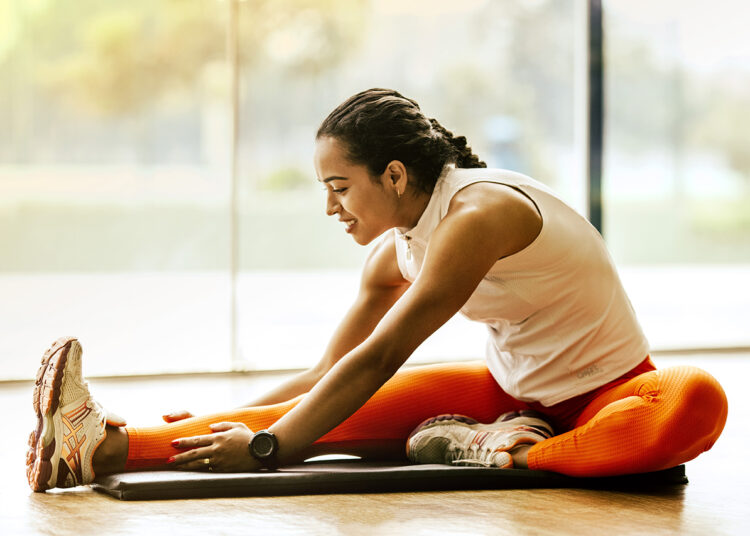Hydration: The Secret Weapon for Peak Performance
Discover how staying properly hydrated can significantly boost your physical performance and overall well-being.
1. The Importance of Personalized Hydration
Hydration is more than just quenching thirst; it’s a pivotal element in achieving peak physical performance. Experts now emphasize personalized hydration strategies that consider individual factors like exercise intensity, the surrounding environment, and your unique sweat rate. Tailoring your fluid intake to these specific needs can dramatically improve your endurance and focus.
2. Hydration Strategies for Different Activities
Whether you’re hitting the gym for a moderate workout or pushing your limits in an endurance event, your hydration needs will vary. During moderate workouts, aim for about 200–300 mL (7–10 oz) of water every 10–20 minutes. Remember to increase this amount when exercising in hot or humid conditions to compensate for increased sweat loss.
3. Electrolytes and Endurance
For those longer, more strenuous activities, it’s not just about water. Alternating between water and electrolyte-rich drinks is crucial for maintaining sodium balance. This prevents hyponatremia, a condition that can occur when you drink too much plain water without replenishing electrolytes, especially during ultra-endurance events.
4. Monitoring and Adjustment
Keeping tabs on your body weight before and after exercise can provide valuable insights into your fluid replacement needs. This simple practice helps you fine-tune your hydration strategy, ensuring you’re adequately replacing lost fluids without overdoing it. The table below illustrates general hydration recommendations for various activities:
| Group | Hydration Recommendation | Frequency/Amount | Special Considerations |
|---|---|---|---|
| General Adults (Sedentary) | Water intake | At least eight 8-ounce glasses per day | Add electrolyte supplements if needed |
| Exercise under Hot Conditions (Athletes) | Water and electrolyte-rich beverages | Drink before, during, and after workouts | Schedule exercise in cooler times; frequent water breaks |
| During Moderate Workouts | Water | 200–300 mL (7–10 oz) every 10–20 minutes | Monitor for overhydration |
| High-Intensity/Endurance | Alternate water & electrolytes | About 4 to 8 ounces every 15 to 20 minutes | Avoid hyponatremia; personalize based on sweat loss |
source_name: LA Times “Hydration for Workouts: How Much Water Do You Really Need?”
time: 2025-07-17
Eat Smart, Move Strong: Nutrition’s Role in Fitness
Discover how dietary choices, especially fiber intake, profoundly impact your physical health and fitness journey, according to recent research.
1. The Fiber-Fitness Connection
A growing body of research underscores the importance of dietary fiber in supporting physical health and weight management. A recent U.S. study has brought renewed attention to the role of fiber, particularly in its association with obesity. The findings reveal that individuals struggling with obesity consistently consume lower amounts of dietary fiber compared to those within a healthy weight range. Fiber plays a critical role in promoting satiety, regulating blood sugar levels, and maintaining digestive health—all of which contribute to more sustainable weight control. These insights raise an important question: could something as simple as eating more whole grains, fruits, vegetables, and legumes help reduce obesity risk and improve overall fitness? With its low-calorie, nutrient-dense profile, dietary fiber might be one of the most overlooked yet effective tools in the pursuit of better health.
2. Insights from the NHANES Study
The National Health and Nutrition Examination Survey (NHANES), a large-scale, government-led initiative, served as the data source for this research. By analyzing the dietary patterns of thousands of participants across various demographics, researchers found a clear trend: those classified as obese had significantly lower fiber intake than their non-obese counterparts. NHANES is renowned for its rigorous methodology, including physical examinations and dietary recall interviews, making its findings especially credible. This evidence strengthens the argument that fiber consumption is not just a minor dietary detail but a measurable factor in population-level health trends. It also highlights an opportunity for public health education—encouraging people to increase fiber intake as part of broader dietary improvements could have far-reaching impacts on national obesity rates and related chronic conditions.
3. Holistic Wellness Approach
While nutrition is a powerful cornerstone of health, experts agree that it cannot act alone. National health organizations advocate for a comprehensive wellness strategy that blends diet with other lifestyle components, including regular physical activity, quality sleep, stress management, and proper hydration. A fiber-rich diet contributes to this framework by improving gut health, which is increasingly recognized as central to immune function and mental well-being. Moreover, fiber slows digestion, helping regulate energy levels throughout the day—making it easier to stay active and maintain consistent workout routines. When combined with sufficient movement, restful sleep, and mindful hydration, dietary fiber becomes part of a synergistic approach to health that supports both physical fitness and long-term vitality. In other words, optimizing your well-being isn’t just about counting calories—it’s about making meaningful, sustainable lifestyle choices that nourish both body and mind.
Exercise Beyond the Gym: Everyday Activities that Count
Discover how incorporating simple, everyday activities into your routine can significantly boost your physical health, making exercise more accessible and enjoyable.
1. The Power of Everyday Movement
Leading health authorities are increasingly emphasizing that maintaining good physical health doesn’t necessarily require intense gym workouts. Instead, incorporating regular movement into your daily life can be remarkably effective. Think about taking the stairs instead of the elevator, or walking during your lunch break. These small changes can accumulate and contribute significantly to your overall well-being.
2. Official Recommendations for a Healthier You
Official guidelines suggest that adults should aim for at least 150 minutes of moderate-intensity aerobic activity each week, alongside muscle-strengthening exercises at least twice a week. Activities like brisk walking, dancing, or even light cycling can all contribute to meeting these recommendations. The key is to find activities you enjoy and can easily integrate into your daily routine.
3. Making Every Step Count
Public health initiatives are actively promoting increased walkability and reduced sedentary behavior. While the potential for short trips on foot is high, data suggests that less than a quarter of these trips are actually made this way in the United States. Overcoming barriers like time constraints and safety concerns is crucial in helping people unlock their physical potential outside of traditional gym settings.
Q&A
Question 1: What are the key factors influencing personalized hydration strategies, according to the provided text on hydration and peak performance?
Answer: Personalized hydration strategies consider individual factors such as exercise intensity, the surrounding environment (temperature and humidity), and individual sweat rate. Tailoring fluid intake to these specifics improves endurance and focus.
Question 2: How much water is recommended during moderate workouts, and how should this recommendation be adjusted based on environmental conditions?
Answer: During moderate workouts, aim for 200–300 mL (7–10 oz) of water every 10–20 minutes. This amount should be increased when exercising in hot or humid conditions to compensate for greater sweat loss.
Question 3: Why is it important to consume electrolyte-rich drinks during prolonged, strenuous activities, and what condition can be avoided by doing so?
Answer: During longer, more intense activities, alternating between water and electrolyte-rich drinks is crucial for maintaining sodium balance. This prevents hyponatremia, a condition caused by drinking too much plain water without replenishing electrolytes, particularly during ultra-endurance events.
Question 4: How can monitoring body weight before and after exercise help refine hydration strategies?
Answer: Tracking body weight before and after exercise provides valuable insights into fluid loss and replacement needs. This allows for fine-tuning hydration strategies to ensure adequate fluid replenishment without overhydration.













